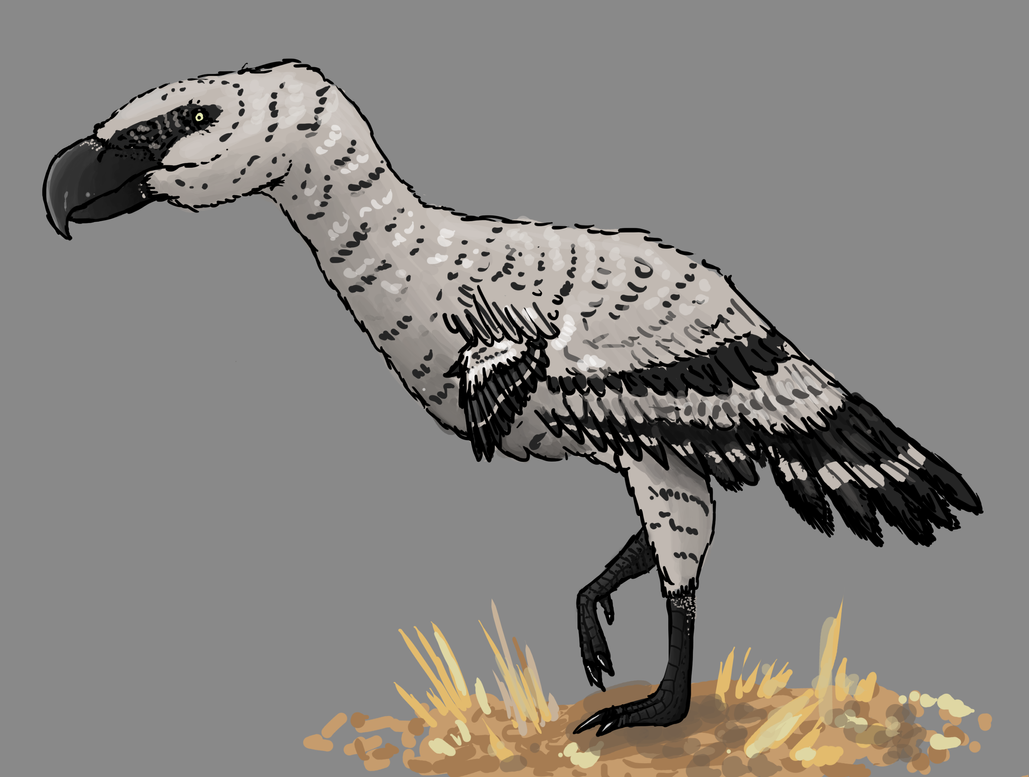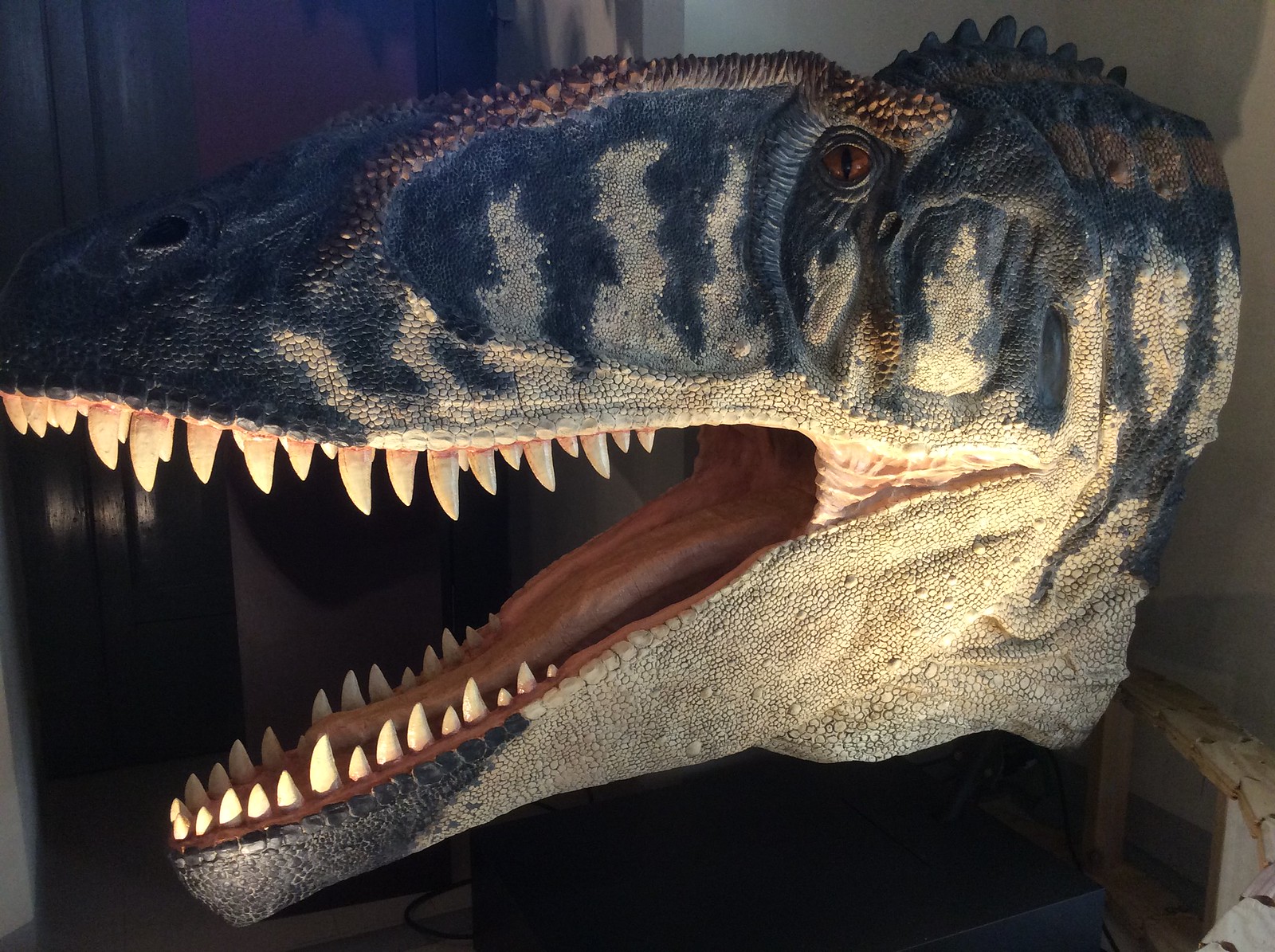Post by Carcharodon on Jun 1, 2016 5:24:54 GMT 5
Kelenken guillermoi
Kelenken guillermoi is an giant flightless predatory bird of the family Phorusrhacidae or "terror birds". K. guillermoi lived in the Langhian stage of the Miocene, some 15 million years ago, in Argentina along with Argentavis. With a skull 28 inches (71 cm) long (including its 18 inch, 45.7 cm beak), it had the largest head of any known bird. It is the largest species of phorusrhacid. The tarsometatarsus was about 45 cm long. It is not entirely clear how Kelenken captured and killed its prey. As a large flightless carnivore, Kelenken likely chased down and killed its prey with several bone-shattering blows from its massive beak. Another possibility is that it may have picked up its prey item, then proceeded to shake it vigorously in order break its back. It is also possible that Kelenken may have been a scavenger, driving off other predators from their kills with its impressive size.

Quetzalcoatlus nothropi
Quetzalcoatlus was a pterodactyloid pterosaur known from the Late Cretaceous of North America (Maastrichtian stage) and one of the largest known flying animals of all time. It was a member of the Azhdarchidae, a family of advanced toothless pterosaurs with unusually long, stiffened necks. Its name comes from the Mesoamerican feathered serpent god Quetzalcoatl. Skull material (from the unnamed smaller species) shows that Quetzalcoatlus had a very sharp and pointed beak, contrary to some earlier reconstructions that showed a blunter snout, based on the inadvertent inclusion of jaw material from another pterosaur species, possibly a tapejarid or a form related to Tupuxuara. A skull crest was present but its exact form and size are still unknown. When it was first discovered, scientists estimated that the largest Quetzalcoatlus fossils came from an individual with a wingspan as large as 15.9 meters (52 feet), choosing the middle of three extrapolations from the proportions of other pterosaurs that gave an estimate of 11, 15.5 and 21 meters respectively (36 feet, 50.85 feet, 68.9 feet). In 1981, further study lowered these estimates to 11–12 meters (36–39 ft). More recent estimates based on greater knowledge of azhdarchid proportions place its wingspan at 10–11 meters (33–36 ft). Mass estimates for giant azhdarchids are extremely problematic because no existing species share a similar size or body plan, and in consequence published results vary widely. While some studies have historically found extremely low weight estimates for Quetzalcoatlus, as low as 70 kilograms (150 lb) for a 10-meter (32-feet-10-inches) individual, a majority of estimates published since the 2000s have been higher, around 200–250 kilograms (440–550 lb).

Kelenken guillermoi is an giant flightless predatory bird of the family Phorusrhacidae or "terror birds". K. guillermoi lived in the Langhian stage of the Miocene, some 15 million years ago, in Argentina along with Argentavis. With a skull 28 inches (71 cm) long (including its 18 inch, 45.7 cm beak), it had the largest head of any known bird. It is the largest species of phorusrhacid. The tarsometatarsus was about 45 cm long. It is not entirely clear how Kelenken captured and killed its prey. As a large flightless carnivore, Kelenken likely chased down and killed its prey with several bone-shattering blows from its massive beak. Another possibility is that it may have picked up its prey item, then proceeded to shake it vigorously in order break its back. It is also possible that Kelenken may have been a scavenger, driving off other predators from their kills with its impressive size.

Quetzalcoatlus nothropi
Quetzalcoatlus was a pterodactyloid pterosaur known from the Late Cretaceous of North America (Maastrichtian stage) and one of the largest known flying animals of all time. It was a member of the Azhdarchidae, a family of advanced toothless pterosaurs with unusually long, stiffened necks. Its name comes from the Mesoamerican feathered serpent god Quetzalcoatl. Skull material (from the unnamed smaller species) shows that Quetzalcoatlus had a very sharp and pointed beak, contrary to some earlier reconstructions that showed a blunter snout, based on the inadvertent inclusion of jaw material from another pterosaur species, possibly a tapejarid or a form related to Tupuxuara. A skull crest was present but its exact form and size are still unknown. When it was first discovered, scientists estimated that the largest Quetzalcoatlus fossils came from an individual with a wingspan as large as 15.9 meters (52 feet), choosing the middle of three extrapolations from the proportions of other pterosaurs that gave an estimate of 11, 15.5 and 21 meters respectively (36 feet, 50.85 feet, 68.9 feet). In 1981, further study lowered these estimates to 11–12 meters (36–39 ft). More recent estimates based on greater knowledge of azhdarchid proportions place its wingspan at 10–11 meters (33–36 ft). Mass estimates for giant azhdarchids are extremely problematic because no existing species share a similar size or body plan, and in consequence published results vary widely. While some studies have historically found extremely low weight estimates for Quetzalcoatlus, as low as 70 kilograms (150 lb) for a 10-meter (32-feet-10-inches) individual, a majority of estimates published since the 2000s have been higher, around 200–250 kilograms (440–550 lb).









